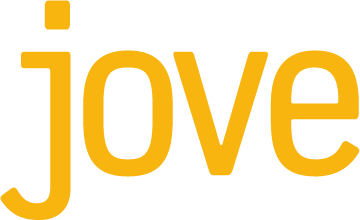Attract, engage: Research-based content marketing
/Thought leadership is a marketing mainstay in financial services—and remains an excellent way to engage with advisors and institutional investors. But the content explosion over the last decade has made it much harder to develop thought leadership that gets noticed and gets audiences engaged.
One approach that’s working: campaigns built on the unique insights of quantitative research.
For a closer look, we spoke with Jim Neuwirth, founder and President of 8 Acre Perspective, a NYC-based research consultancy that has helped create successful research-based thought leadership programs for such firms as Grayscale Investments, Janus Henderson, Incapital, and Calvert.
How effective is thought leadership based on quantitative research?
Jim Neuwirth, 8 Acre Perspective
In our experience, research-based thought leadership can be very powerful for an organization. To maximize the value, though, you need a plan and a process, from idea generation up front through execution and public rollout. One critical piece is ensuring all the right players are involved from the start, including your marketing communications and PR personnel, both internally as well as any external partners who will play a role in promoting the insights from the thought leadership research.
Tell us about some of your recent work.
An asset manager client was looking to create proprietary content it could leverage to build brand awareness and enhance its position as a leader in fixed-income solutions. In collaboration with this firm’s PR agency, we developed a research program that determined how financial advisors are incorporating fixed income into client portfolios today, uncovered motivators and barriers to using individual bonds, identified key sources of information for fixed income decision-making, and explored the advisor outlook for fixed income.
We conducted an online survey with 200 financial advisors across channels (wirehouse, regional, IBD and RIA). Many great storylines emerged.
How did this asset manager leverage the research?
They issued a press release that got picked up by a wide range of publications. They also created a whitepaper that was downloadable from their website, had executives interviewed by the media about the research, and presented their research findings at conferences.
Beyond PR and marketing, this research was very important and insightful from a business standpoint, as they were able to leverage the insights in their own product development and business planning efforts.
How do you choose a thought leadership topic—one that’s on your audience’s mind, that you can own, that somehow speaks to your brand, and that you can research quantitatively?
First, you need a topic that connects to the firm’s brand and the goals that the firm has for the thought leadership study. Second, it must be relevant and of interest to your target audience. Third, it needs to be unique. For any potential topic, we always do a search of what has been done already. If the topic has been covered, we will either pick a different focus area or modify our angle on it so that it becomes unique.
What preparation is involved?
We typically start the process with an informal brainstorm to discuss why our client wants to consider thought leadership research. What are the goals? In this initial meeting we also will discuss potential topics and areas of exploration, and who we want to survey (for example, financial advisors, end investors, or both).
From this meeting, we will put together a project brief, outlining the goals, survey audience, and potential topic areas. The next meeting is more formal, where we work together to identify survey topics that everyone is excited about.
Who’s in the room? What happens?
In this meeting, it’s good to have not just the executive stakeholders but also the PR team and anyone else who will be involved in the marketing of the study results. This meeting is always led and facilitated by our team. Sometimes it’s a 90-minute telephone or video conference meeting, other times it’s an in-person three-hour workshop. Each situation is different, and we work with our client to determine the ideal approach.
How do you ensure the issues are all audience-driven, and not just things the sales team wants to talk about?
At the start of the meeting, everyone needs to be aligned on the premise that any topics/approaches map to these questions:
1. Does it fit with our brand and the messages we want to promote?
2. Is it relevant? Will our target audiences find it of interest?
3. Is it unique and differentiated from what’s already out there?
4. Will the news media care?
If you can’t answer yes to all of these questions, you have to question whether it is the best possible topic to explore.
Do you help the firm decide on the topic?
Yes, absolutely. We are not just facilitating and guiding the process, but also active participants in the ideation.
How long does this phase take?
It really varies but it tends to be pretty quick. As you know, speed to market is critical, so we work with our clients to accelerate things as much as possible. Having all the right players in these upfront meetings definitely helps keep things moving at a good pace.
OK, you’ve chosen a topic. Now it’s time to conduct the quantitative research. Take us through that.
Once everyone is aligned on the topics and issues to explore, the 8 Acre project team will brainstorm on what questions to ask in the survey. We create a first draft and then work iteratively with our client to finalize it.
One thing we try to do in all of our studies is to develop media hooks. Sometimes it’s incorporating questions on a hot topic, such as how financial advisors feel about discussing cannabis investing with clients. Other times it’s cutting the data in interesting ways; for example, looking at gender or generational differences.
Do you ever recommend qualitative research for thought leadership? When is that appropriate?
We have found that thought leadership research is most effective when there are statistics involved, so quantitative research is always part of the process. We do, however, sometimes incorporate qualitative research. Usually it’s as a first step to inform the design of the quantitative survey. Information from the qualitative can also be incorporated into the final report and marketing materials—for example, verbatim quotes or even video clips.
What’s in the final report?
We will put together a strategic report of findings and insights from the research. The marketing teams will then leverage this to create the press release and other content for public release.
Importantly, our role does not end after delivering the final report. We review all publicly released materials for accuracy, including the data itself and how the findings are presented. We actually require this. While our clients would never intentionally publish incorrect findings, it’s very easy to inadvertently misreport survey data, so we play a vital role ensuring data and reporting accuracy.
Is there any value in repeating the research?
It depends on the topic and the goals for the research, but we typically recommend conducting research that can be repeated.
Doing multiple studies on the same topic has several benefits. First, you start building trend data and that makes the research even more valuable. Second, your firm begins to get recognized as the de facto expert and go-to resource on this topic.
As far as frequency, it depends on the topic, but typically it is an annual study. It’s important to note that future versions of the study don’t have to be identical. There can be certain questions that remain and are trended, while others can be removed and replaced with fresher, more timely questions.


